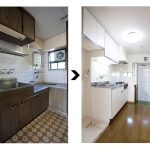Most metal finishing and coating companies in Massachusetts will offer some form of passivating services. However, just because a company has the capacity to offer a specific metal finishing service doesn’t mean they have the experience and the expertise to ensure that all parts and components and processed to your exact specifications.
Ideally, look for a metal finishing company offering passivating services that is also ISO 9001:2008 certified company. This is a voluntary certification only awarded to companies that complete a rigorous review and development of standards for quality control and customer service. This ensures that your parts will be produced to industry standards by a company that is geared to focusing on quality control at each step in the process.
Passivation
All passivating services are designed to improve the corrosion of specific types of alloy and metals. The most commonly passivated material is stainless steel, but it can also be used on other alloys as well including titanium.
While metals are considered to be corrosion resistant, as is titanium, they will also corrode over time. This corrosion can occur more rapidly in specific types of environments. This occurs because the natural ability of the surface of the stainless cannot passivate fast enough on its own. The chromium oxide, which forms the layer, is often exposed to corrosive chemicals such as sulfides that limit the natural passivation.
How it Works
Using either citric acid or nitric acid, the stainless steel or other alloy is stripped of the free iron on the surface. This is done without the need for electrical current, so it is a chemical process only.
When the free iron is removed, it allows the chromium oxide to naturally develop the protective layer without the presence of the free iron that hinders the process. This acid, either nitric or citric, is at the correct level to remove the free iron without any chemical or structural change to the surface.
Before starting the immersion in the acid bath, it is critical to completely and thoroughly clean the surface of the parts or components to be passivated. They are then placed in the bath for a specific amount of time and then removed.
After the part or component is removed it is rinsed, sometimes more than once to remove any of the acid residue. It is then dried and specific corrosion tests are run on samples of the process to ensure they are protected from salt spray, humidity or other specific chemicals as to specific industry standards and requirement.





